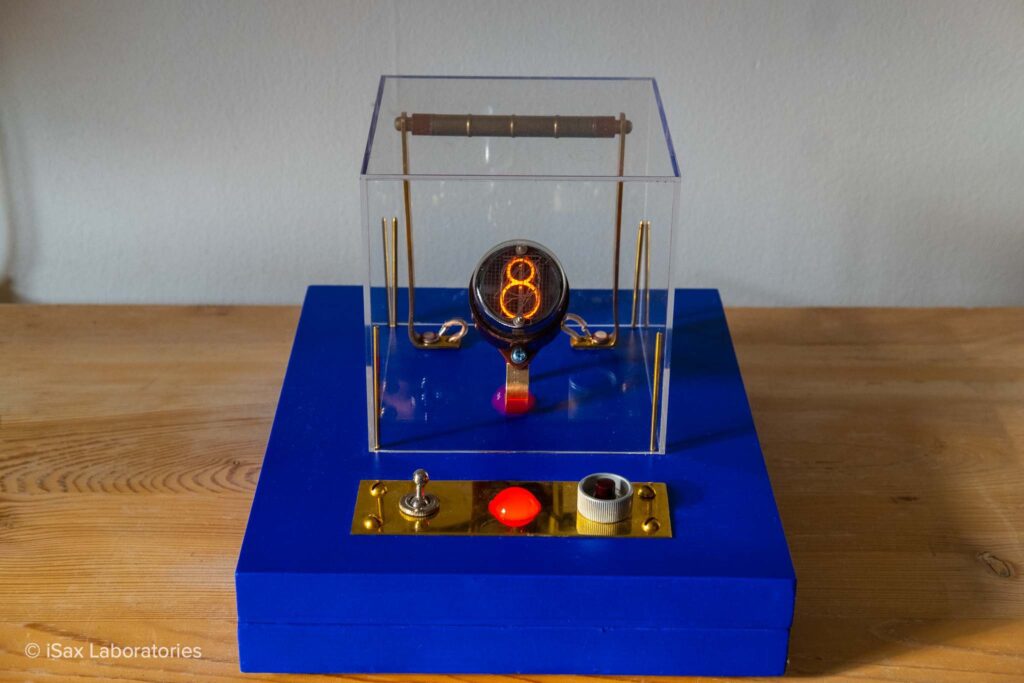Cosmic background radiation dice for your next game night

In the aftermath of the Big Bang, a cloud of charged particles, referred to as the cosmic microwave background radiation, was left over. This can not only be detected by advanced scientific equipment, but also by a Geiger counter. iSax aimed to use this idea for a novel virtual dice that measures the truly random amount of time it takes for particles to pass through a counter.
The project starts with an old Soviet-style Geiger tube that outputs a signal whenever a charged particle crosses its path. Upon pressing a button, the dice begins to shuffle until a number is determined by checking if the elapsed time in microseconds is even or odd. After four of these measurements have been taken, the resulting four-bit binary representation is converted from a series of bits to a digit and sent to an American Nixie tube with the help of an Arduino Nano. Current for the Nixie tube is provided by a high-voltage power supply while the remaining components use 5V.

This device is a great demonstration of how nuclear physics can be utilized to generate random events. And better yet, it combines both American and Soviet-era components for an interesting mashup between the two superpowers of the Cold War. You can read more about iSax’s build here on Hackaday and watch an explanation of the CMB radiation dice below.
Leave a Reply
You must be logged in with your Arduino account to post a comment.